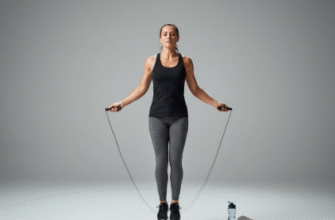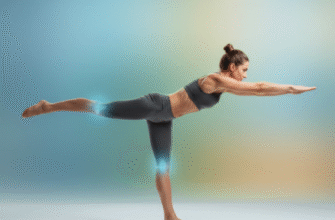The harsh fluorescent lighting buzzes overhead. The mirror reflects back a slightly warped, unfamiliar version of yourself. You tug at the waistband, smooth down the fabric, turn side to side. Does it fit? Does it look okay? Does it make you feel… less than? For many, the simple act of trying on clothes transforms from a practical necessity or even a potential source of joy into an exercise in self-scrutiny and discomfort. The fitting room can feel like a judgment chamber. But what if there was a way to navigate this experience with less emotional turbulence? Enter body neutrality.
Understanding Body Neutrality: A Different Perspective
We hear a lot about body positivity – the push to love our bodies unconditionally, flaws and all. While a wonderful goal for some, for others, it can feel like an immense pressure, another standard to fail at. If you’re struggling with negative body image, jumping straight to unwavering love can feel impossible, even disingenuous. Body negativity, the critical inner voice that picks apart every perceived imperfection, is draining and harmful. Body neutrality offers a middle ground, a space of quiet acceptance.
Body neutrality isn’t about loving or hating your appearance; it’s about decentering it. It shifts the focus from how your body *looks* to what it *does*. It’s about appreciating your body as the functional vessel that carries you through life – allowing you to walk, breathe, hug loved ones, experience the world – rather than primarily viewing it as an aesthetic object to be constantly evaluated. It’s about respect, not necessarily adoration. It aims to reduce the sheer amount of time and energy spent thinking about and judging your physical form, freeing up mental space for other things.
The Fitting Room Gauntlet: Why It’s So Hard
Fitting rooms often feel like they’re specifically designed to make us feel bad. Let’s break down why:
- Lighting: Often harsh, overhead fluorescent lights cast unflattering shadows, highlighting every lump, bump, or line you might feel self-conscious about.
- Mirrors: They can be warped (“skinny mirrors” exist, but so do their unfortunate opposites), placed too close, or angled in ways that distort perception. Triple mirrors multiply the angles for self-critique.
- Sizing Chaos: You might be a size 10 in one brand, a 14 in another, and an 8 in a third. This inconsistency can trigger feelings of inadequacy or confusion, even though it says absolutely nothing about your actual body and everything about the lack of standardized sizing in the fashion industry.
- Comparison Culture: We consciously or unconsciously compare how we look in clothes to models, influencers, past versions of ourselves, or even the idealized image we had in our head when we picked the garment off the rack.
- Vulnerability: You’re often partially undressed in a small, unfamiliar space. This physical vulnerability can heighten emotional sensitivity.
- The Pressure to Buy: Sometimes there’s an underlying pressure, whether internal or external, to find something that “works,” adding another layer of stress.
All these factors combine to create a perfect storm for negative self-talk and body dissatisfaction. This is where consciously applying body neutrality principles can make a tangible difference.
Applying Body Neutrality While Trying On Clothes
Shifting your mindset in the moment takes practice, but here are strategies to cultivate body neutrality in the fitting room:
Focus on Function and Feel
Instead of immediately judging how the garment makes your body *look*, ask yourself functional questions:
- How does the fabric feel against my skin? Is it scratchy, soft, restrictive, comfortable?
- Can I move freely? Sit down, raise your arms, twist gently. Does it pinch, pull, or constrain movement needed for how you plan to wear it?
- Does it serve its intended purpose? If you need warm trousers, are they warm? If you need a professional blouse, does it feel appropriate for work?
- Is it comfortable? This seems basic, but how often do we sacrifice comfort for perceived aesthetic gain, only to regret it later? Prioritize genuine physical ease.
Detach from the Size Tag
Seriously. Cut it out if you need to once you get home. Sizes are arbitrary numbers assigned by brands, not reflections of your worth or health. If a size larger than usual fits comfortably and functionally, that’s the right size for *that specific garment*. It provides zero information about you as a person. Repeat after me: It’s the clothes that need to fit your body, not your body that needs to fit the clothes. If an item doesn’t fit, the item failed, not you.
Observe, Don’t Judge
Try to adopt the mindset of a neutral observer. Instead of “Ugh, my stomach looks huge in this,” try “This shirt is pulling across my midsection.” Instead of “My arms look flabby,” try “The sleeves on this dress feel tight.” This subtle language shift separates the observation about the garment’s fit from a negative judgment about your body part. It acknowledges the reality of the fit without attaching self-criticism.
Remember: Clothes Are Mass-Produced, Bodies Aren’t
Garments are designed based on standardized fit models and patterns, intended to approximate a wide range of human shapes. Your unique body, with its own proportions and curves, isn’t meant to perfectly align with every single mass-produced item. Finding clothes that fit well often involves trial and error, tailoring, or simply accepting that not every trend or style will work for your individual shape – and that’s perfectly okay. It’s a logistical issue, not a personal failing.
Set an Intention Before You Go
Why are you shopping? Do you *need* new work pants? Are you looking for a comfortable sweater? Go into the fitting room with a clear goal that isn’t centered on evaluating your body. Focus on finding an item that meets your practical needs or brings you functional joy (like a cozy jumper). This purpose can help anchor you when critical thoughts arise.
Take Breaks and Know Your Limits
If you start feeling overwhelmed, anxious, or triggered, step out of the fitting room. Take a few deep breaths. Get some water. Walk around the store for a bit. There’s no rule that says you have to power through a miserable experience. It’s okay to decide you’ve had enough for one day and try again another time. Protecting your peace is more important than finding the “perfect” outfit.
Body neutrality encourages viewing your body as a tool rather than an ornament. It’s about appreciating its capabilities and treating it with respect, regardless of its appearance. This perspective aims to lessen the emotional weight tied to how we look. It fosters acceptance without the pressure of constant positivity.
Beyond the Fitting Room: Integrating Neutrality Daily
The practice of body neutrality doesn’t have to be confined to shopping trips. It can permeate your daily life. When getting dressed in the morning, focus on choosing clothes that feel comfortable and allow you to move through your day with ease. Notice the physical sensations – the softness of a sweater, the support of your shoes. Express yourself through style if that brings you joy, but detach it from the need for external validation about your body shape or size.
Think about the language you use when talking about your body, even internally. Try to shift away from judgmental words (positive or negative) towards more neutral, descriptive terms. Appreciate moments where your body allows you to do things you enjoy – walking in nature, laughing with friends, reading a book, tasting delicious food. These small shifts, practiced consistently, can gradually lessen the power that appearance holds over your self-worth and overall well-being.
Moving Towards a More Peaceful Experience
Trying on clothes doesn’t have to be a battleground. By adopting principles of body neutrality, you can start to dismantle the negative thought patterns and external pressures that make the fitting room feel like such a challenge. It’s about acknowledging your body, respecting its function, and prioritizing comfort and practicality over adherence to arbitrary beauty standards. It’s not about instantly silencing the inner critic or never having a negative thought again; it’s about developing tools to manage those thoughts and reduce their impact. It’s about finding a more peaceful, accepting way to simply exist in your clothes and in your body, one outfit at a time.








